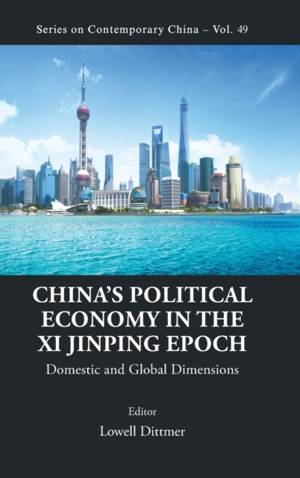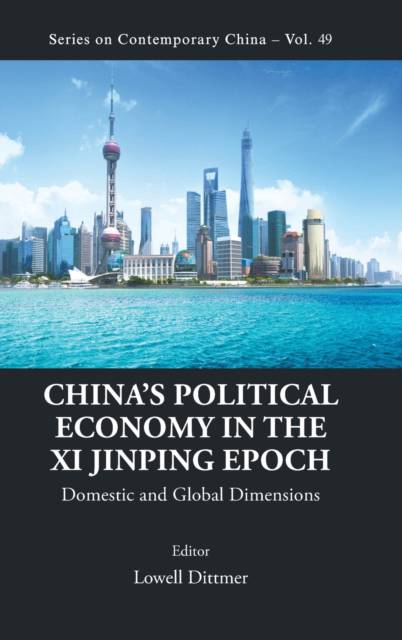
- Afhalen na 1 uur in een winkel met voorraad
- Gratis thuislevering in België vanaf € 30
- Ruim aanbod met 7 miljoen producten
- Afhalen na 1 uur in een winkel met voorraad
- Gratis thuislevering in België vanaf € 30
- Ruim aanbod met 7 miljoen producten
Zoeken
China's Political Economy in the XI Jinping Epoch: Domestic and Global Dimensions
€ 215,45
+ 430 punten
Omschrijving
This book takes a fresh look at Chinese political economy at a key inflection point. Facing a more competitive international environment, Chinese reform has shifted from its earlier focus on economic liberalization and political decentralization to a more tightly organized, centralized form of state socialism. The Party-state's vigorous fiscal reaction to the Global Financial Crisis (2008-2009) left the country with a much improved infrastructure and greater sense of national self-assurance. The more monocratic central leadership has redoubled efforts to fight poverty and pollution, push technological innovation, and at the same time rigorously enforce ideological consensus, political loyalty and anticorruption.This has been occurring in an international context of slowing trade and nationalist pushback against 'globalization', prominently including bilateral Chinese-American polarization. While China has been among the staunchest advocates and beneficiaries of globalization, incipient trade war 'decoupling' has spurred movement toward economic and technological self-reliance. Turning inward however vies with a rival impulse toward more vigorous engagement in the world. This is most consequentially represented by the Belt and Road Initiative, driving massive infrastructure construction through Central Asia and the South and Southeast Asian maritime periphery. Despite slowing growth and a large debt overhang, swift recovery from the Covid-19 epidemic leaves China in a relatively strong economic position.
Specificaties
Betrokkenen
- Uitgeverij:
Inhoud
- Aantal bladzijden:
- 408
- Taal:
- Engels
- Reeks:
- Reeksnummer:
- nr. 49
Eigenschappen
- Productcode (EAN):
- 9789811226571
- Verschijningsdatum:
- 8/04/2021
- Uitvoering:
- Hardcover
- Formaat:
- Genaaid
- Afmetingen:
- 152 mm x 229 mm
- Gewicht:
- 712 g

Alleen bij Standaard Boekhandel
+ 430 punten op je klantenkaart van Standaard Boekhandel
Beoordelingen
We publiceren alleen reviews die voldoen aan de voorwaarden voor reviews. Bekijk onze voorwaarden voor reviews.







